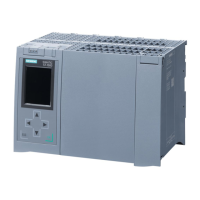Industrial cybersecurity
4.9 Secure operation of CPUs
S7-1500R/H redundant system
System Manual, 01/2024, A5E41814787-AF
61
The process ID serves to clearly identify the individual processes, for example
during analysis and troubleshooting.
"-" is output if information is missing.
ID to identify the message. "-" is output if information is missing.
Structure of the STRUCTURED-DATA element
STRUCTURED-DATA provides information in an interpretable and decomposable data format.
The following applications are possible, for example:
• More information about the syslog message
• Application specific information
STRUCTURED-DATA can contain one or more elements (SD-ELEMENT). Each SD element must
be enclosed in square brackets. If STRUCTURED-DATA consists of multiple SD elements, the
individual SD elements are separated by a space.
Each SD-ELEMENT consists of its name (SD-ID) and one or more name-value pairs
(SD-PARAM). Each name-value pair consists of a parameter name (PARAM-NAME) and the
associated value (PARAM-VALUE). A space separates the individual components (SD-ID and
SD-PARAM) within an SD element.
A CPU transmits the following SD ELEMENT in a syslog message, for example:
Figure 4-5 Example: SD ELEMENT of the syslog message of a CPU
Structure of the MSG element
In the MSG (MESSAGE) element, a CPU transmits the simplified name of the event in English.
The following table shows what the content of a message of the MESSAGE element can look
like.
SE_LOCAL_SUCCESSFUL_LOGO
N
The local logon has been successful (e.g. on the operator display of
the CPU).
More information
You can read more information about the structure and transmission of syslog messages in
the following RFCs (Request for Comments):
• The syslog protocol (RFC 5424) (https://tools.ietf.org/html/rfc5424)
• Transferring syslog messages via Transport Layer Security (RFC 5425)
(https://tools.ietf.org/html/rfc5425)
• Transferring syslog messages via UDP (RFC 5426) (https://tools.ietf.org/html/rfc5426)

